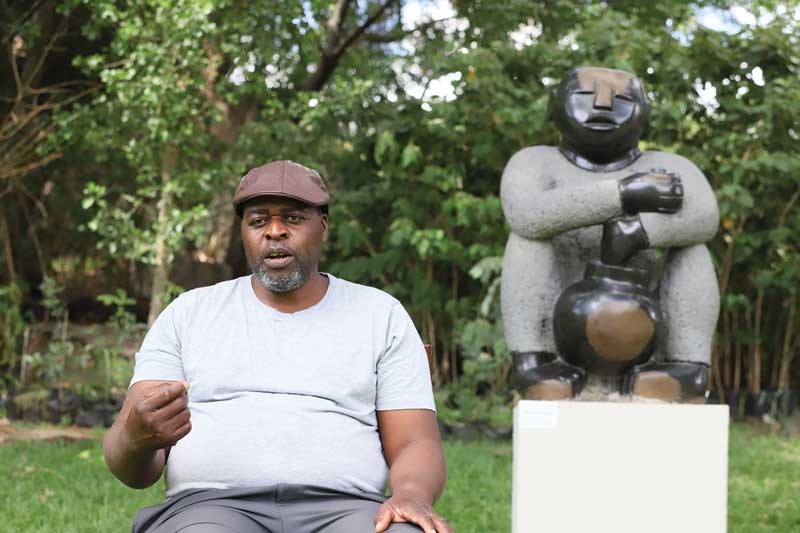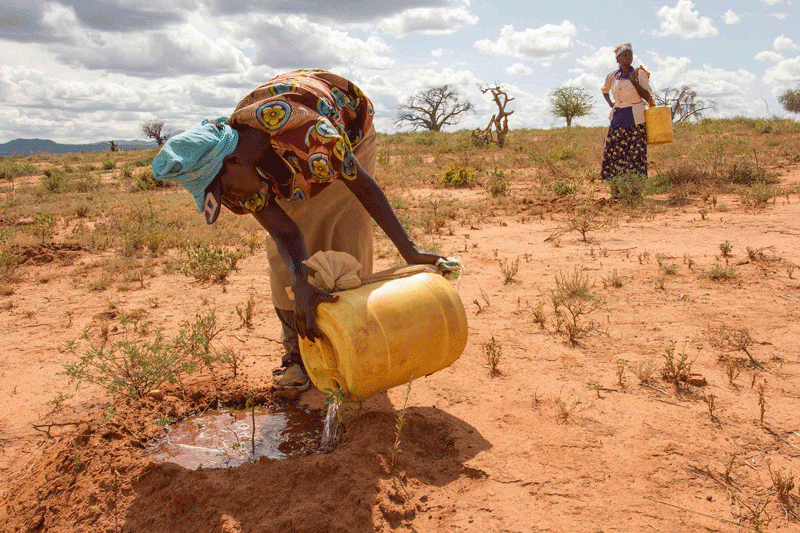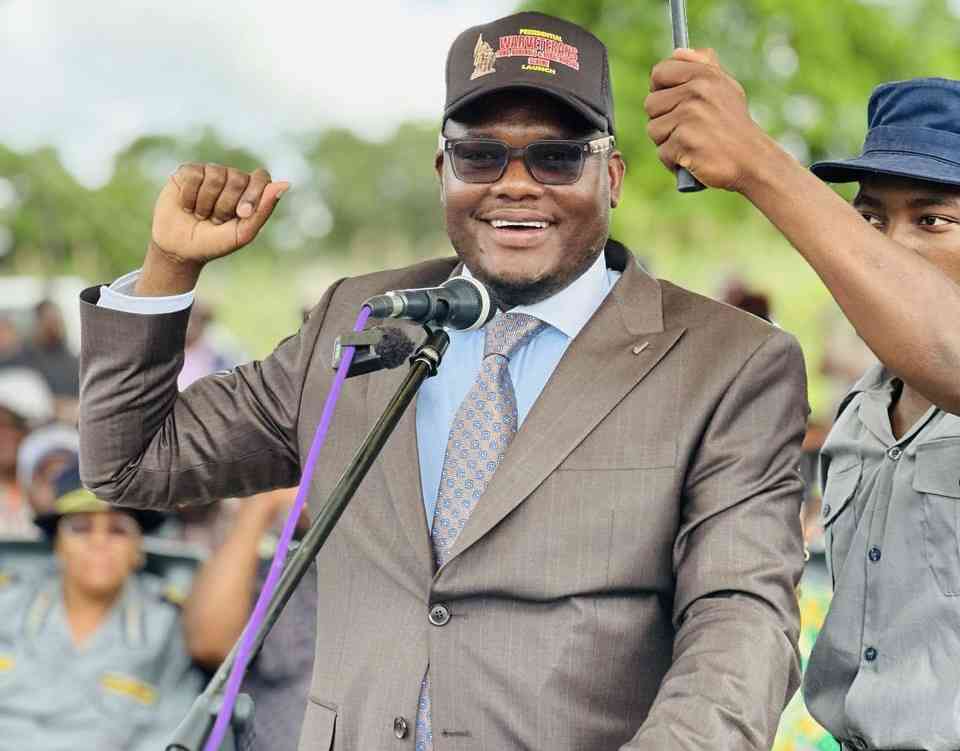
FOR some people, rocks are just some had natural formations lying on the earth’s surface, but from a sculptor’s perspective, it is a form of engagement. It is charming how natural creations such as rocks can be transformed to resemble great things that can also tell a story many can resonate with in their day-to-day lives or may interpret in different ways. Using a hammer and a chisel as his major tools, Nicholas Kadzungura has made several rock carvings that carry different messages. NewsDay Weekender caught up with the renowned sculptor who has made Chapungu Sculpture Park in Msasa, Harare, his second home since 1997. With about 26 years in the industry, Kadzungura is grateful for the accomplishments that have come with stone carving.
Early life
I was born at St Albert’s Mission in Centenary, Mashonaland Central province in 1967. I went to St Albert’s Mission School up to Ordinary Level. I was born with some art traits. Growing up in Centenary, I used to carve small animals such as rats using wood. I then came to Harare to find a job at the invitation of my brother-in-law. I started working at the University of Zimbabwe (UZ) Zoology Department. By that time, I was staying in Zengeza with my brother.

I then met Damian Manuhwa, a famous first-generation artist whose sculptures attracted me. I would go to see him sculpting. I really liked it and he encouraged me to do sculpting as a side hustle while I worked on my job. When my employer died in road traffic accident in Mozambique, I was left jobless and that is when I turned to sculpture full-time for survival.
Art interpretation
I believe art is an expression of one’s feelings and views towards the world and its surroundings. It is a way artists use to communicate some of the most complex issues that people can be able to relate to. Art can be interpreted in many ways, but artists write a description on their piece of work as a guideline. Parting with some of my works has, however, not been easy as some are very touching because they have meanings that are relatable, but because I need money, I send them away. Even when I am home, I can be able to see things that are not seen by others resembling art. Some sculptures are not man-made, but created by God. One may come across a tree resembling something relatable to our daily lives.
Breakthrough
- Chinanga sets eyes on arts centre
- Kadzungura breathes life into rocks
- A moment of artistic brilliance: With Ish Marimirofa
Keep Reading
The encouragement that Manuhwa gave me kept me strong in the arts industry. When we were sculpting in Chitungwiza, Manuhwa then took me to Chapungu Sculpture Park. I thought he did not want to work with me and he was dumping me. Little did I know that it was an opportunity that was presented for me to soar.
First auctions
The first five pieces I made were submitted for an exhibition at the National Gallery of Zimbabwe and one was rejected. The pieces that were selected were going for an exhibition in Australia. I had no idea they were already bought. When I went to the gallery to collect the piece that was rejected, I could not find it. They gave me money instead, someone had bought it. I was not confident in my works by that time and I thought I would not compete with other artists. What I did not know was that my sculptures were unique.
Accomplishments
Art afforded me the opportunity to travel and fly to other countries and interact with people from different cultures and races. I had so much to learn from mixing and mingling with different people. This allowed me to be exposed to different types of food, weather, languages and even advice. Had it not been for art, I would have never known how it felt to be in an aeroplane. I have been to the Netherlands, Germany, South Africa, England, the United States of America, Ohio and Central Colorado doing exhibitions. I have showcased my artifacts from places such as Denver, Missouri and Chicago Botanic Gardens, Franklin Conservatory, among others. One of my biggest sculptures is at Denver Botanic Gardens in America.
I have also built a house to provide a decent home for my family in Dzivarasekwa (a high-density suburb in Harare). I own cattle too that have built my social status in the community in Centenary.
Also, I can afford university education for two of my children and others who are still at secondary school. I tasked myself that I would not let my children suffer the same fate as mine, catering for their own school fees. Even though I might have nothing much left with me for my upkeep, I make sure to provide for the needs of my children so that they do not feel like they do not belong.
The legacy in safe hands
My son Allan, who is doing Form Three at St Albert’s Mission is following in my footsteps. I am not worried that my talent will end with me. He loves carving wood and I believe with time he will be turning to stones.

Away from rocks and chisel
Back at my rural home I do farming, I grow maize at the farm. We travel to Centenary during the farming season to carry out all the necessary procedures. This year things are going to be a little bit difficult as my mother who used to look after the farm’s day-to-day operations passed away in May.
Advice to aspiring sculptors
Art does not necessarily pay when one has just started, it requires a lot of patience. I encourage artists to explore their own avenues and remain unique and authentic in their work to stand out.







